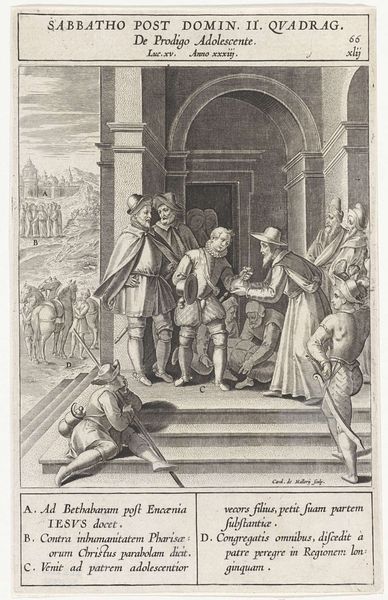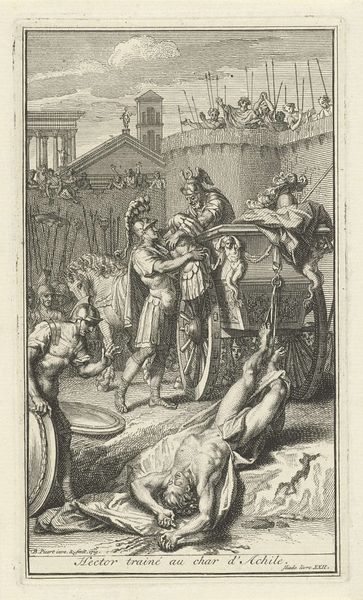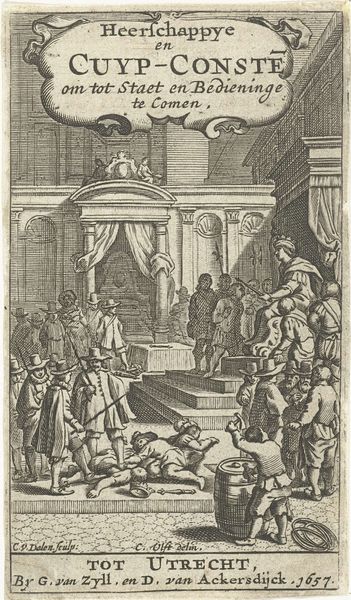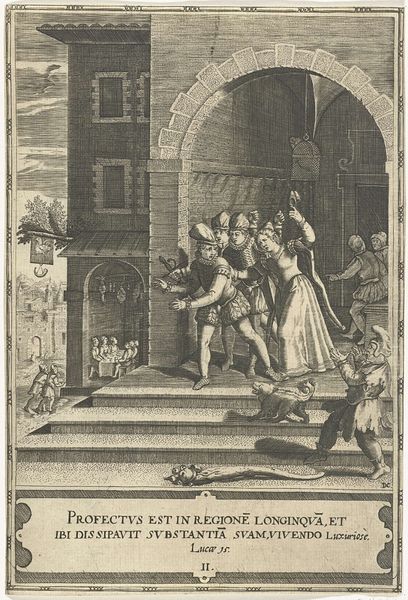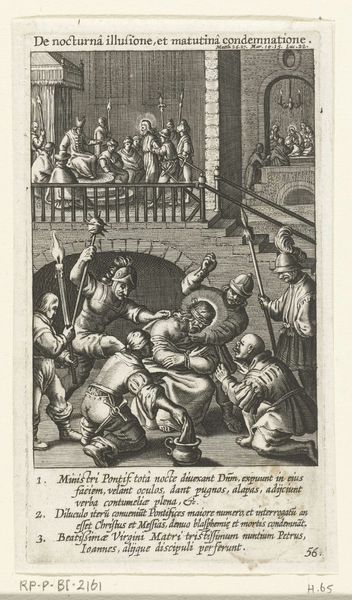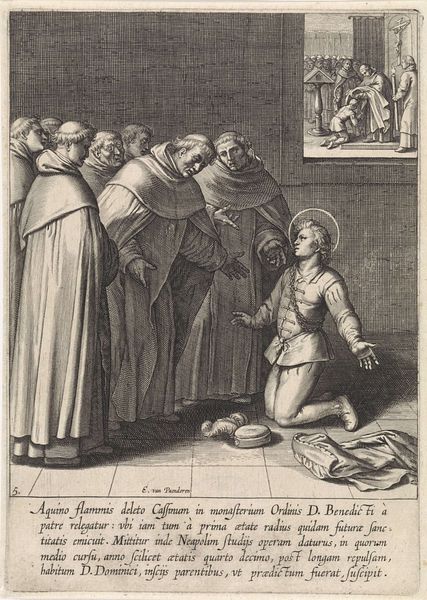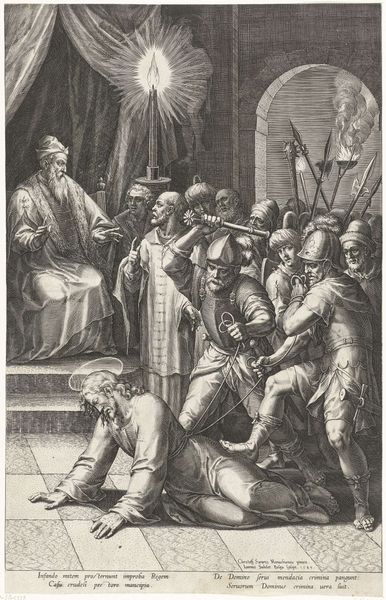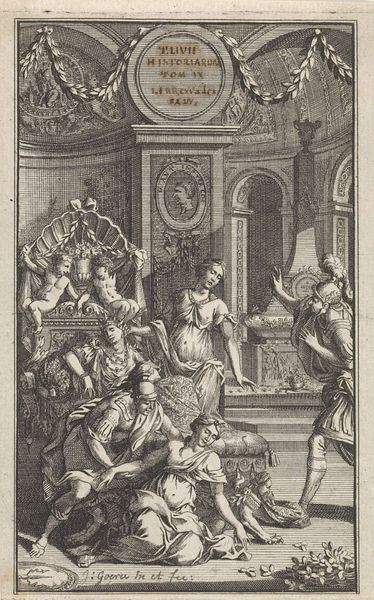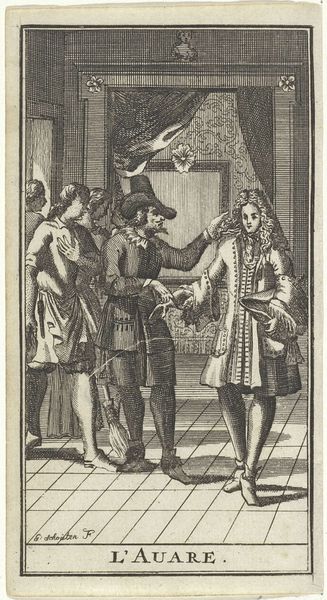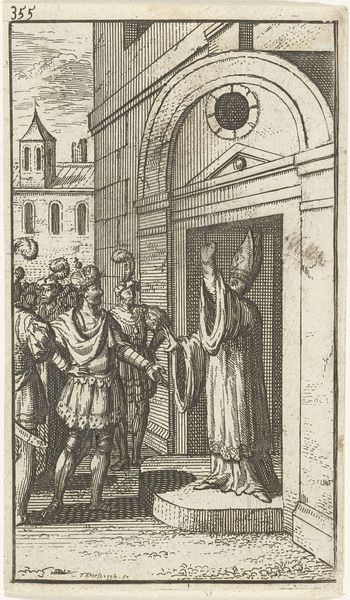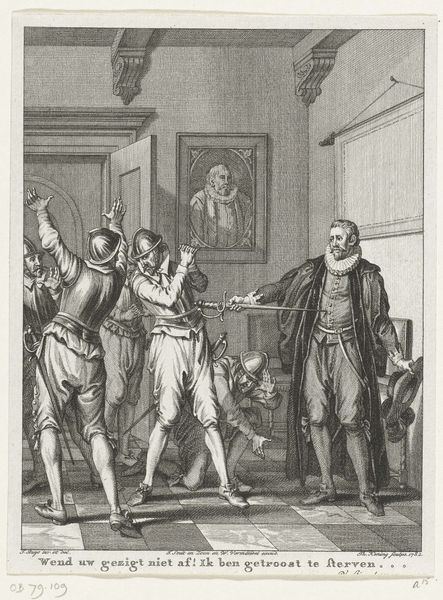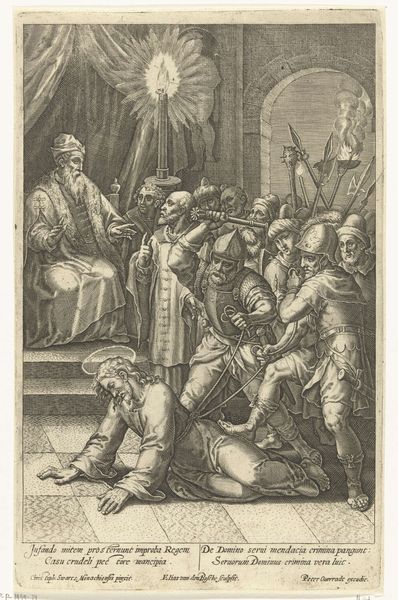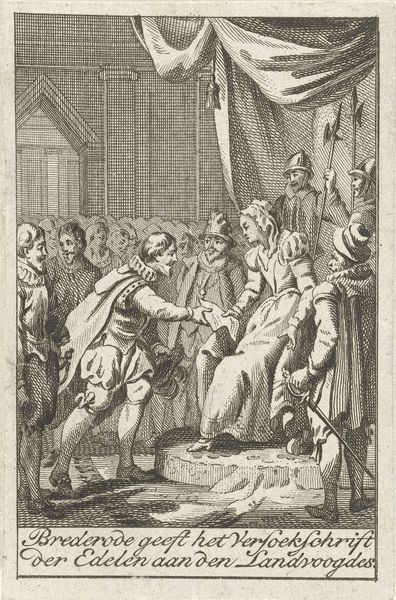
Gelijkenis van de Verloren Zoon: de derde zoon krijgt zijn deel van de erfenis uitbetaald c. 1579 - 1615
0:00
0:00
print, engraving
#
narrative-art
# print
#
figuration
#
line
#
genre-painting
#
history-painting
#
northern-renaissance
#
engraving
Dimensions: height 220 mm, width 145 mm
Copyright: Rijks Museum: Open Domain
Dominicus Custos created this engraving, "Gelijkenis van de Verloren Zoon", sometime around the turn of the 17th century. The image depicts a biblical parable through the visual codes of the Netherlands. The architecture is a kind of Northern European take on classicism, and the figures are dressed in the garb of Dutch merchants and soldiers. This was a period when the Dutch Republic was consolidating its economic and political power. The print seems to reflect a society in transition, where traditional religious values were being challenged by new economic opportunities. The story of the prodigal son would have resonated with a culture grappling with these changes, and the artist uses visual cues to make this connection explicit. The Rijksmuseum holds this print today, but it can also be accessed online. Investigating its provenance can tell us more about the changing public role of art over the centuries. The meaning of art is never fixed, but depends on its ever-changing social and institutional context.
Comments
No comments
Be the first to comment and join the conversation on the ultimate creative platform.
